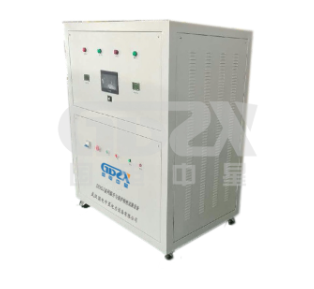NEWSnews
Method and Test Procedure Requirements for Temperature Rise Test of High Voltage
Test methods and procedures
High voltage circuit breaker
1) Circuit breaker pre test status
The temperature rise test should be conducted on a clean new circuit breaker;
The installation method of circuit breakers should be consistent with their actual operating state, or according to the most unfavorable heat dissipation conditions. The circuit breaker should be assembled in its corresponding switchgear for temperature rise testing, and relevant drawings and information of the switchgear it is equipped with should be provided.
2) Experimental environmental conditions
The ambient temperature should be between+10 ℃ -+40 ℃. The thermal field is measured using three thermocouples evenly arranged around the specimen, at the average height of the specimen's current carrying capacity, and 1 meter away from the specimen. To avoid reading errors caused by rapid temperature changes, place the thermocouple in a bottle with a capacity of 1L and a built-in transformer oil of 0.5L or more;
The air flow rate shall not exceed 0.5m/s;

Sunshine radiation and other radiation should be avoided, and the surrounding air should not be significantly contaminated by dust, smoke, corrosive or flammable gases, vapors, or salt mist.
Test requirements
Main circuit resistance measurement
Before the temperature rise test, measure the circuit resistance while the test object is in the ambient air temperature. After the temperature rise test is completed, measure the circuit resistance when the test object cools to the ambient air temperature. The circuit resistance values measured before and after the temperature rise test should be within the specified values of the product technical conditions, and the difference between the two measurements should not exceed 20%;
Number of test poles
In principle, the test should be conducted on a three pole specimen, but if the influence of other poles can be ignored, the test can also be conducted on a single pole. For three pole test specimens with a rated current not exceeding 630A,
Three poles can be connected in series for testing.
Test sample with higher voltage level
Their ground insulation has no significant impact on temperature rise, and can reduce the impact on large specimens during ground insulation testing.
Temporary connection line
The temporary connecting wire connected to the test object should not significantly introduce or export heat. Its length should not be less than 2m, and measurement points should be buried on the busbar 1m away from the test sample wiring terminal and on the test sample wiring terminal. The difference in temperature rise between the two should not exceed 5K.
Test current
The test current should be the rated working current of the test object or the value specified by its technical conditions (such as the DL standard requiring 1.1 times the rated current). The deviation range of the current is 0% -+2% (this limit is only maintained during the last two hours of the temperature rise test)
The current waveform should be sinusoidal, with a frequency of 50Hz and a frequency deviation range of -5% -+5%. In order to accelerate the test, it is allowed to preheat with a current greater than the specified value without affecting the test results and the structural strength of the specimen. Preheat until any point in all test points reaches about 80% of the expected temperature, and then lower it to the rated current.
temperature measurement
Use a Level 1 tolerance T-type thermocouple for temperature measurement (thermocouples should comply with GB16839 and its related standards).
GDZX is a manufacturer of power testing equipment, producing a wide range of products with complete models and providing professional technical support. The phone number is 4000-828-027.





















